Craft Seamless Digital Experiences with Expert UI/UX Designers
Your customers form opinions about your business within seconds. Every click, swipe, and scroll influences their decision to stay or leave.
Thoughtfully crafted UI/UX design makes users enjoy seamless, engaging experiences that drive loyalty, conversions, and lasting business value.
Simplifying the Power of Great UI/UX Design
Great digital products succeed when user experience (UX) and user interface (UI) design work in harmony. Together, they create intuitive and visually compelling interactions that engage users and meet business goals. Here’s how:
The Strategic Core: UX Design
UX design focuses on strategy and empathy. It prioritizes understanding users and solving their challenges to create functional, user-friendly products. Key elements include:

- User Research: UX designers uncover user pain points, motivations, and behaviors to guarantee every decision aligns with audience needs.
- Intuitive Navigation: Through thoughtful information architecture, UX design simplifies complex systems, helping users find what they need without confusion.
- Prototyping and Usability Testing: Early-stage designs are tested and refined based on real user feedback, saving time and establishing better outcomes.
The Visual Impact: UI Design
UI design transforms the functionality of UX into engaging visuals and interactions. It focuses on creating interfaces that are both aesthetically pleasing and easy to use.
- Brand-Consistent Design: UI designers aims to have every visual element reflects your brand identity, from typography to color palettes.
- Responsive and Engaging Elements: Buttons, menus, and animations provide intuitive, seamless interactions.
- Clear Layouts: Thoughtful composition and hierarchy guide users through the product, enhancing usability and accessibility.
UI ensures your product looks as good as it feels, delivering a polished, professional experience.
While UX lays the groundwork for usability and functionality, UI elevates it with compelling visuals and engaging interactions. Together, they create experiences that delight users and deliver measurable results. A truly exceptional product is never just functional or beautiful—it’s both.
Navigating the Challenges of Hiring UI/UX Designers
Finding the right UI/UX designer—a professional who can combine technical expertise with creative insight—is no small task. The traditional in-house hiring process often comes with challenges that can delay progress and strain resources.

- High Demand, Limited Supply: The need for skilled UI/UX designers far outweighs the available talent, especially in specific regions, creating stiff competition for the best candidates.
- Rising Costs: Experienced designers with proven portfolios often command high salaries, making them inaccessible for smaller organizations.
- Time-Intensive Process: Sourcing, interviewing, and onboarding candidates can take months, delaying critical projects and impacting timelines.
- Keeping Up with Innovation: With new tools, techniques, and trends emerging constantly, maintaining a designer’s expertise requires ongoing investment in training and development.
These obstacles have made traditional hiring methods less viable for many businesses, prompting them to explore smarter alternatives.
Smarter Sourcing for UI/UX Design Talent

To overcome the hiring challenges, businesses are increasingly turning to offshoring, specifically to source highly skilled UI/UX design professionals. Offshoring provides a practical, efficient, and strategic way to meet the growing demand for exceptional designers while addressing cost and time constraints.
Access Specialized UI/UX Design Talent Globally
UI/UX design requires a unique combination of technical skills, creativity, and user empathy. By offshoring, businesses can expand their reach beyond local constraints to connect with exceptional designers worldwide.

- Global Expertise in UI/UX: Tap into a diverse range of professionals who specialize in UX research, wireframing, interaction design, and creating visually compelling interfaces.
- Fresh Perspectives for Innovative Design: Designers from different cultural and professional backgrounds bring unique ideas and approaches to user experience and interface design challenges.
- Overcome Talent Shortages: High competition for UI/UX expertise in local markets is no longer a limitation when offshoring opens doors to a global talent pool.
Save Costs Without Compromising Quality
Hiring UI/UX designers offshore enables businesses to allocate resources more efficiently while maintaining high standards of design quality.

- Competitive Rates: Skilled designers from other countries often offer their services at significantly lower costs than those in Western markets.
- Higher ROI: Reduced hiring expenses free up budgets for other critical aspects of your business, such as product development or marketing initiatives.
Addressing Concerns When Offshoring UI/UX Talent
While offshoring offers clear benefits, some businesses may have concerns about potential challenges. These can be effectively addressed with strategic planning:
- 1Communication Challenges
Clear communication is critical for any design process. To maintain smooth collaboration:- Work with designers who are fluent in English or your preferred language.
- Use collaboration tools like Slack, Figma, and Zoom to streamline discussions and feedback loops.
- 2Ensuring Quality Standards
To maintain high-quality results, adopt a thorough vetting process:- Request portfolios showcasing past UI/UX design work, particularly in areas relevant to your needs.
- Conduct detailed interviews to assess technical expertise and problem-solving skills.
- Assign trial projects to evaluate their ability to meet expectations in real-world scenarios.
- 3Protecting Intellectual Property and Data
When working with offshore teams, prioritize data security by:- Implementing robust confidentiality agreements and NDAs during onboarding.
- Establishing secure workflows for handling sensitive project files and communication.
- 4Managing Time Zone Differences
Time zone gaps can be turned into an advantage when managed well:- Create clear schedules for overlapping working hours to accommodate real-time collaboration.
- Leverage asynchronous communication for tasks that don’t require immediate feedback to achieve productivity around the clock.
Current Trends Shaping the UI/UX Landscape
The UI/UX design landscape is constantly evolving, driven by rapid advancements in technology, shifting user expectations, and the increasing complexity of digital experiences. To stay competitive and build future-proof products, businesses must understand these trends and make certain their designers are equipped to meet emerging challenges.
1. Accessibility and Inclusive Design
Creating accessible digital products is no longer optional—it’s essential. Inclusive design supports users of all abilities, including those with disabilities, can navigate and interact with digital platforms effectively. UI/UX designers are now prioritizing:
- Compatibility with assistive technologies like screen readers.
- Compliance with accessibility guidelines, such as WCAG.
- Design choices that remove barriers, such as clear text, larger touch targets, and color contrast adjustments.
2. Personalization and Customization
Users increasingly expect tailored experiences that feel uniquely crafted for them. UI/UX designers are leveraging data and insights to:
- Create adaptive interfaces that adjust to different user profiles and contexts.
- Implement customization options, allowing users to modify their experience based on preferences.
- Build user journeys that feel personal, engaging, and relevant.
3. Mobile-First and Responsive Design
As mobile usage continues to dominate, designing for mobile devices is now a top priority. UI/UX designers are:
- Applying responsive design principles for seamless functionality across all devices, from smartphones to desktops.
- Optimizing for smaller screens, focusing on simplicity, clarity, and fast load times.
- Incorporating touch-friendly designs to enhance usability on mobile platforms.
4. Microinteractions and Delightful Details
Small design details can have a big impact on user experience. Microinteractions, such as subtle animations, hover effects, or haptic feedback, are being used to:
- Guide users intuitively through interfaces.
- Provide instant feedback on user actions, such as button clicks or form submissions.
- Add personality and delight to digital products.
5. AI and Machine Learning in Design
Artificial intelligence is transforming UI/UX design, offering opportunities to create smarter, more efficient interfaces. Designers are using AI and machine learning to:
- Automate repetitive design tasks, freeing up time for more creative work.
- Personalize user experiences based on behavioral data and preferences.
- Analyze user interactions to identify pain points and optimize designs for better usability.
6. Emphasis on User Research
Understanding the user is the cornerstone of effective UI/UX design. Designers are dedicating more resources to user research to gather actionable insights through:
- User interviews and surveys to understand needs and behaviors.
- Usability testing to uncover friction points in the user journey.
- A/B testing to compare design iterations and identify what works best.
7. Voice User Interfaces (VUIs)
With the rise of smart speakers and voice-activated technologies, UI/UX designers are now tackling the unique challenges of designing for voice. This includes:
- Creating intuitive voice flows that mimic natural conversation.
- Designing prompts and feedback mechanisms to guide users effectively.
- Addressing limitations, such as assuring clarity in noisy environments.
8. Augmented and Virtual Reality (AR/VR)
AR and VR technologies are becoming mainstream, opening new opportunities for immersive digital experiences. Designers are being tasked with:
- Building intuitive navigation systems for 3D environments.
- Addressing challenges like motion sickness and providing comfort during extended use.
- Designing experiences that feel natural and engaging within augmented or virtual spaces.
9. Ethical Design
As digital experiences become more pervasive, ethical considerations in design have taken center stage. Designers must address concerns like:
- Data privacy, securing user information is protected and handled responsibly.
- Avoiding manipulative practices, such as dark patterns that trick users into unintended actions.
- Designing for fairness and inclusivity to eliminate bias in digital products.
Differentiating the Best: The Hallmarks of Exceptional UI/UX Designers
Not all UI/UX designers are created equal. While many possess a baseline understanding of the field, exceptional designers bring unique qualities that set them apart:
A User-Centric Mindset:
Exceptional designers empathize deeply with users. They design not just for users but with them, continuously seeking feedback and iterating to improve experiences.
A Strategic Approach:
They understand how UI/UX impacts broader business goals and align design decisions with measurable outcomes. Their work is not just user-friendly but commercially successful.
A Passion for Innovation:
Great designers constantly refine their skills, experiment with new techniques, and push creative boundaries to deliver unique solutions.
Excellent Communication and Collaboration Skills:
Whether presenting their ideas or collaborating with developers and stakeholders, they clearly articulate their vision and ensure alignment across teams.
A Growth Mindset:
The best designers are lifelong learners, staying on top of emerging trends, tools, and technologies. They view feedback as an opportunity for growth and embrace new challenges with enthusiasm.
These qualities define designers who consistently create exceptional digital experiences while driving tangible business value. But finding professionals who embody these qualities can be a challenge. That’s where LevelUp excels.
LevelUp: Your Partner in Securing Exceptional UI/UX Talent
At LevelUp, we specialize in connecting businesses with UI/UX designers who exemplify the qualities that set the best apart. Our rigorous vetting process affirms that every designer we recommend is a true expert—skilled, strategic, and user-focused.

We understand that hiring the right designer is critical to delivering engaging and results-driven user experiences. That’s why we go beyond resumes and portfolios, identifying professionals who not only possess technical expertise but also the creativity, empathy, and collaborative spirit required to elevate your digital products.
Our streamlined process delivers tailored solutions, whether you need a single designer or a dedicated team. With LevelUp, you can save up to 70% on hiring costs while ensuring your digital products engage, delight, and deliver measurable results.





